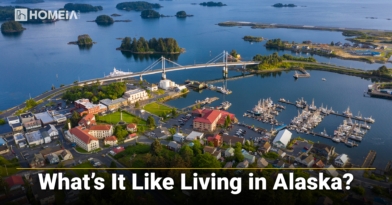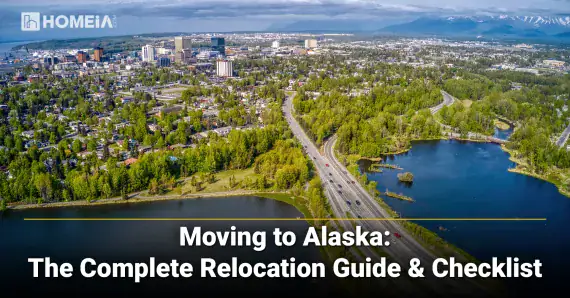The Pros and Cons of Living in Alaska
- Local Editor:Local Editor: The HOMEiA Team
Published: Oct 24, 2025
- Category: City Living Guide
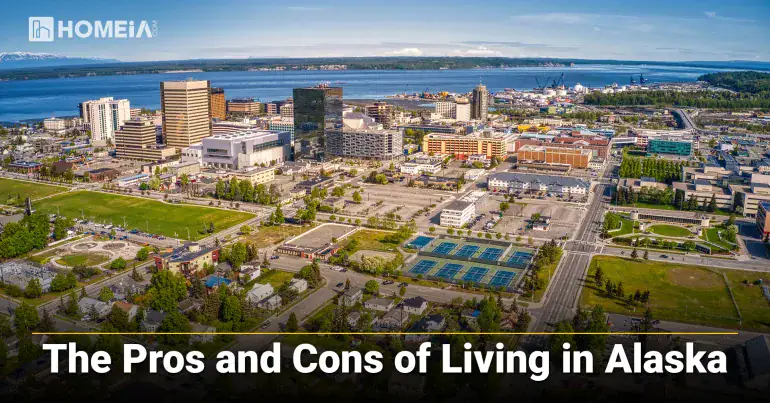
The Pros and Cons of Living in Alaska: When picturing Alaska, what comes to mind are vast wilderness landscapes, towering mountains, and the Northern Lights. But the Last Frontier offers more than Arctic clichés; here lies a land where rugged independence, stunning natural beauty, and unique opportunities define everyday living. Yet, moving there comes with significant trade-offs, from bipolar weather conditions to high costs of living and remote isolation. This guide provides a balanced, comprehensive analysis of the pros and cons of living in the 49th state while offering detailed insights into the best cities for young professionals, families, and retirees. For those considering other unique states, you might explore the pros and cons of living in Colorado.
Table of Contents:
- Key Takeaways
- I. Methodology: How We Evaluated Alaska
- Pros: Why Choose Alaska? Top Benefits
- Cons: Alaska Living Challenges — What to Know
- Best Alaska Cities for Young Professionals
- Best Alaska Communities for Families with Young Kids
- Best Places to Retire in Alaska
- Alaska Lifestyle: Arts, Food, and Recreation
- Frequently Asked Questions About Living in Alaska
Key Takeaways
- Natural Beauty & Adventure: Unparalleled wilderness with mountains, glaciers, fjords, and abundant wildlife, offering world-class outdoor recreation from hiking and fishing to dog sledding and Northern Lights viewing.
- Unique Financial Benefits: Alaska residents receive annual Permanent Fund Dividend payments and enjoy no state income tax or sales tax, though high costs for goods and housing often offset these advantages.
- Extreme Climate & Isolation: Faces some of the harshest winter conditions in the U.S., with long periods of darkness in northern regions and significant isolation from the rest of the country, requiring special adaptation and preparation.
- High Cost of Living: Overall expenses are typically around 30% above the national average, driven by transportation costs for goods, expensive housing in many areas, and high utility bills, particularly in remote communities.
- Economic Opportunities & Challenges: Strong employment in oil, fishing, tourism, and government sectors, but limited job diversity and seasonal fluctuations create economic uncertainty in many regions.
Moving to Alaska: The Complete Relocation Guide & Checklist.
Alaska, bordered by Canada and the Pacific and Arctic Oceans, offers stunning wilderness and modern living. Home to about 750,000 residents, it blends adventure and independence. With no state income or sales tax, the Northern Lights, and Anchorage’s urban charm, Alaska promises a rewarding frontier lifestyle for new residents.
I. Methodology: How We Evaluated Alaska
Our analysis is based on a multi-factor review of key elements that impact residents’ quality of life and financial well-being. We compiled data from reputable 2025 sources, including the U.S. Census Bureau, Bureau of Labor Statistics, Zillow housing market reports, FBI crime statistics, and state agencies.
Our evaluation criteria are weighted as follows:
- Cost of Living (25%): This foundational metric analyzes the day-to-day expenses that define a household budget, including the cost of groceries, utilities, transportation, and healthcare, all benchmarked against national and regional averages to gauge true purchasing power.
- Economic Health & Opportunity (25%): Long-term stability is non-negotiable. This criterion assesses the robustness of the local economy by examining median household income, unemployment trends, and the diversity of key industries to ensure a community is resilient, growing, and full of potential for its residents.
- Housing & Affordability (20%): The most significant financial decision for most. We delve beyond median home prices and rental costs to use crucial ratios like home-price-to-income and income-to-rent—providing a clear picture of how housing costs align with local earnings.
- Quality of Life & Community (20%): Affordability means little without well-being. This metric evaluates the essential factors that contribute to daily life, including access to unique cultural amenities, outdoor recreation, climate, public safety, and the strength of community engagement.
- Access & Infrastructure (10%): A community’s potential is tied to its connections. This evaluates critical modern infrastructure, including reliable high-speed internet, healthcare access, transportation links, and proximity to major employers and commercial centers.
Pros: Why Choose Alaska? Top Benefits
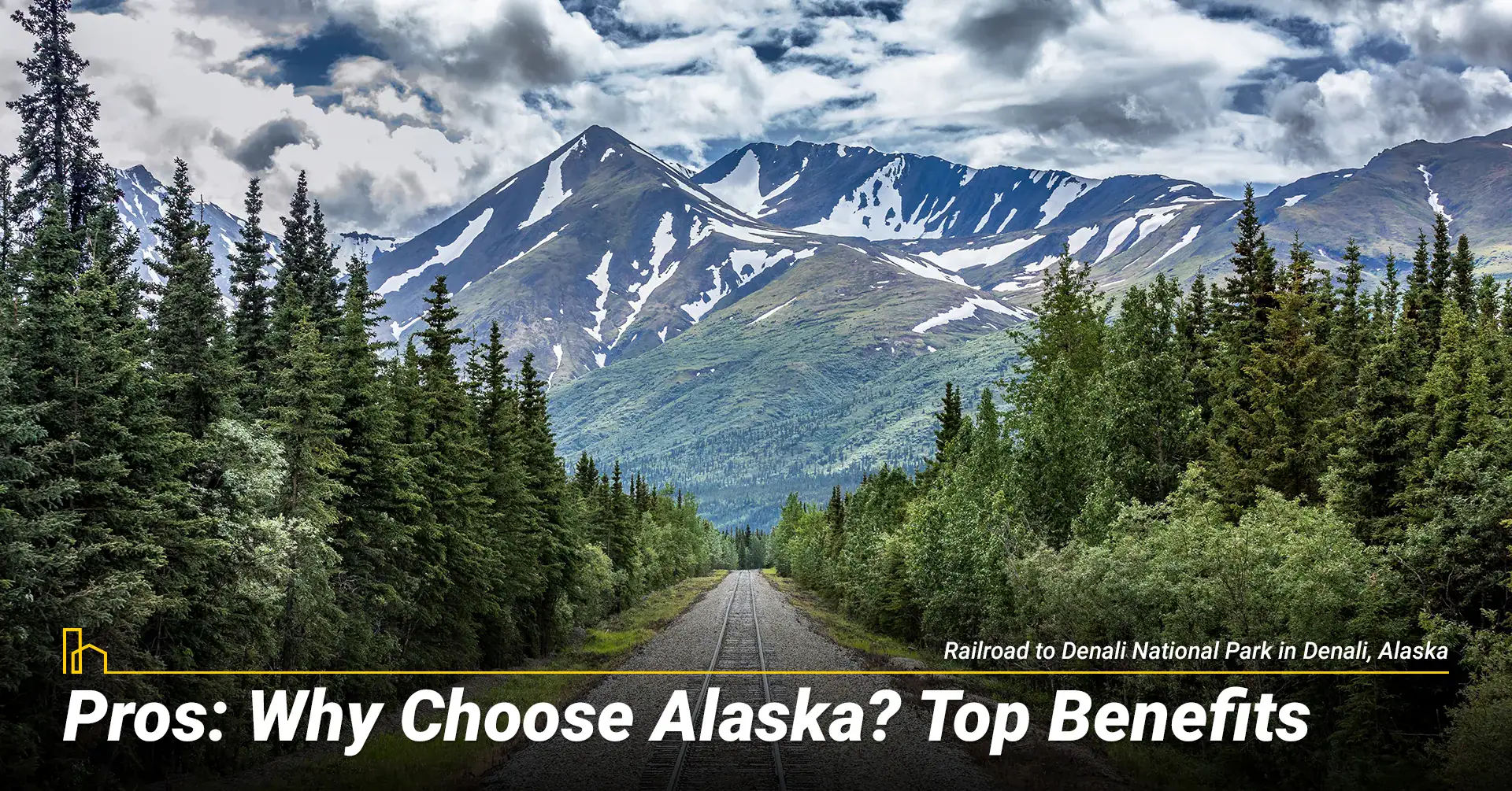
A. Unmatched Natural Beauty and Outdoor Recreation
Alaska’s greatest asset is its stunning and diverse wilderness landscape. Boasting towering mountain ranges, vast glaciers, pristine fjords, and abundant wildlife including bears, moose, and whales. Creating a paradise for outdoor enthusiasts, residents can hike in Denali National Park, fish in world-class salmon streams, ski in world-class resorts, and witness the Northern Lights. For those interested in unique experiences, there are opportunities for dog sledding, glacier trekking, and wildlife photography. For a different mountainous lifestyle, consider the best places to live in Colorado.
B. Unique Financial Benefits: No State Taxes & PFD
One of their renowned perks is its unique financial structure. The state has no income tax and no statewide sales tax on most goods, while residents receive annual Permanent Fund Dividend (PFD) payments from oil revenues (typically $1000-$2000+ per year). Alaskans can keep more of their earnings while receiving a financial bonus each year, though it’s important to note that high costs of living often offset these benefits.
C. Strong Sense of Community and Independence
Life here fosters a unique sense of community and self-reliance. The challenging environment creates strong bonds among residents for dependence. This frontier spirit combines with a deep appreciation for nature and a slower pace of life. Residents develop practical skills and resilience that define the character of those who call the Last Frontier home.
D. Abundant Wildlife and Conservation Ethos
There are unparalleled opportunities to experience wildlife in its natural habitat. From watching bears catch salmon at Brooks Falls to whale watching in coastal communities, locals live surrounded by nature. A commitment to conservation ensures that vast wilderness areas remain protected for future generations, creating a living environment found nowhere else in the US.
E. Unique Cultural Experiences and Frontier Spirit
Rich cultural experiences blend Native traditions, Russian heritage, and modern frontier life. From participating in Native cultural events, learning about gold rush history, or experiencing the unique lifestyle of living in America’s last frontier, this distinct culture values independence, adventure, and connection to the land.
The 5 Best Places to Live in Alaska: A City Comparison
Alaska blends rugged wilderness with modern innovation, offering diverse lifestyles across its vast landscape. This guide spotlights the five best Alaskan cities to live in 2025, based on affordability, safety, opportunity, and quality of life. From Anchorage’s energy to Sitka’s island beauty, discover where your frontier future begins.
Cons: Alaska Living Challenges — What to Know
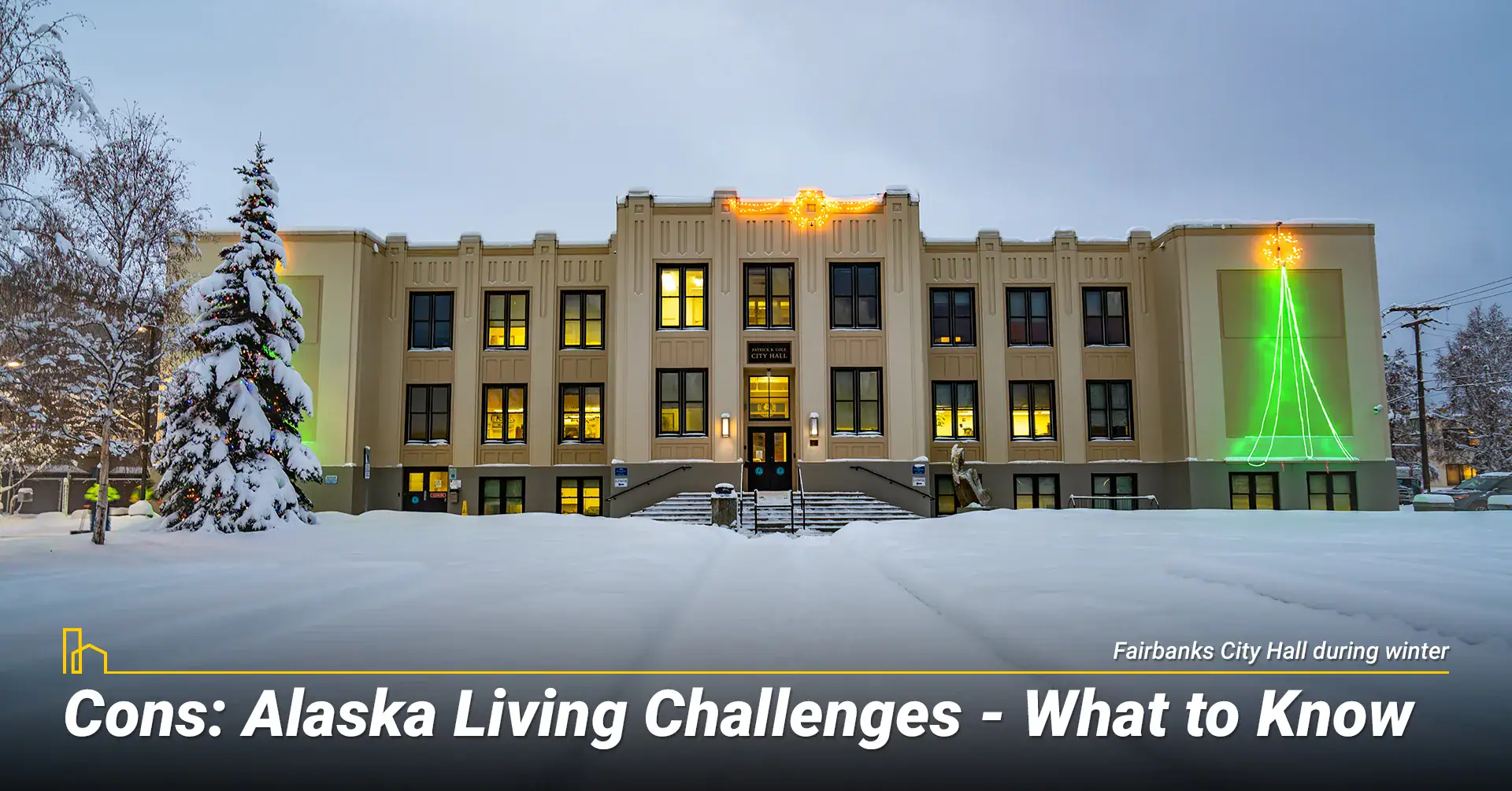
A. Extreme Climate and Seasonal Challenges
AK’s climate is one of its most significant challenges. Winters are frigid and murky, particularly in northern regions where temperatures can drop to -50°F with darkness lasting for months. Summers bring nearly 24-hour daylight in some areas, disrupting sleep patterns. Extreme conditions require special preparation, including proper clothing, home insulation, and mental health considerations for seasonal affective disorder.
B. High Cost of Living and Remote Location
This is what turns potential residents off from their Alaska dreams. Cost of living is approximately 30% above the national average, driven by high expenses including transportation for goods, housing, and utilities. Groceries, fuel, and building materials are significantly pricier than in the Lower 48. For a comparison of more affordable states, see our guide on the most affordable states to buy a house.
C. Limited Access and Transportation Issues
Having vast size and remote location creates significant transportation challenges. Many communities are not connected by road and rely on air travel, ferries, or seasonal access. Isolation interferes with everything from medical care to relationships and receiving goods. The high cost and limited availability of transportation can make simple errands complicated and expensive.
D. Limited Healthcare and Services in Rural Areas
Access to specialized healthcare is limited outside major population centers. Rural communities often have small clinics with finite services, requiring residents trekking to Anchorage or out of state for serious medical conditions. This can mean expensive medical evacuations and long separations from family during treatment.
E. Economic Instability and Seasonal Employment
Here, the economy relies heavily on oil, fishing, and tourism, creating seasonal fluctuations and vulnerability to commodity price changes. Many jobs are seasonal, particularly in tourism and fishing industries, leading to income uncertainty. While the Permanent Fund provides stability, economic diversification remains a challenge in many regions.
Recommended for you
Best Alaska Cities for Young Professionals
1. Fairbanks
HOMEiA Score: 75/100
- Cost of Living: 21% above U.S. average
- Monthly Rent: $1,300
- Home price to income ratio: 5.8:1
- Income to rent ratio: 50.8x
- Safety rating: 60/100
Home to the University of Alaska Fairbanks, this Interior city provides opportunities in education, research, and military sectors. Young professionals are drawn to an authentic experience, including Northern Lights viewing and access to wilderness areas. Serving as a hub for Interior Alaska, it provides essential services to surrounding communities. While winters are extreme, the summer midnight sun and unique cultural experiences make it appealing for adventurous professionals.
2. Juneau
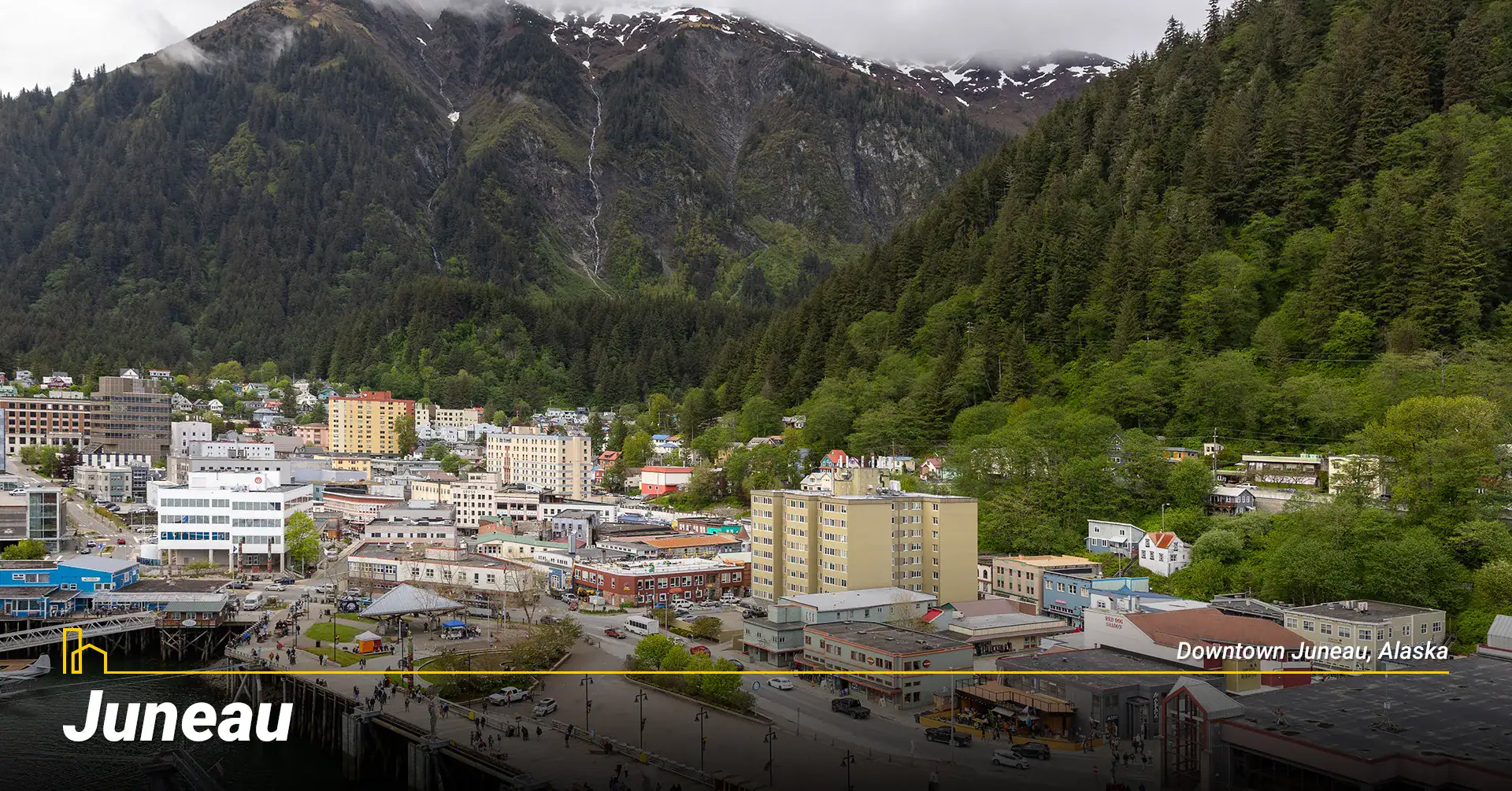
HOMEiA Score: 78/100
- Cost of Living: 27% above U.S. average
- Monthly Rent: $1,450
- Home price to income ratio: 7.1:1
- Income to rent ratio: 48.9x
- Safety rating: 72/100
As the state capital, Juneau attracts young professionals in government, tourism, and fishing industries. This includes stunning coastal mountain scenery, a walkable downtown, and access to the Tongass National Forest. While housing costs are high, government salaries help offset expenses. Its unique location—accessible only by air or sea—fosters a close-knit community for those who value natural beauty over easy travel access.
3. Anchorage
HOMEiA Score: 82/100
- Cost of Living: 23% above U.S. average
- Monthly Rent: $1,600
- Home price to income ratio: 6.2:1
- Income to rent ratio: 45.3x
- Safety rating: 65/100
As Alaska’s largest city, Anchorage is the undeniable economic hub, offering the most diverse job market in the state. Young professionals find opportunities in healthcare, government, transportation, and oil industry support services. Here exists a unique blend of urban amenities—including restaurants, breweries, and cultural events—with immediate access to world-class outdoor recreation. With networking events and Alaska’s major airport, Anchorage is the best place to launch a career in the state while enjoying the natural beauty.
7 Most Affordable Places to Live in Alaska
Despite Alaska’s rugged beauty and higher living costs, several communities offer affordable ways to enjoy the Last Frontier. This guide highlights seven budget-friendly Alaskan towns for 2025, balancing cost, access, and lifestyle. Through data on housing, utilities, and transportation, discover where affordability meets authentic Alaskan living.
Best Alaska Communities for Families with Young Kids
1. Sitka
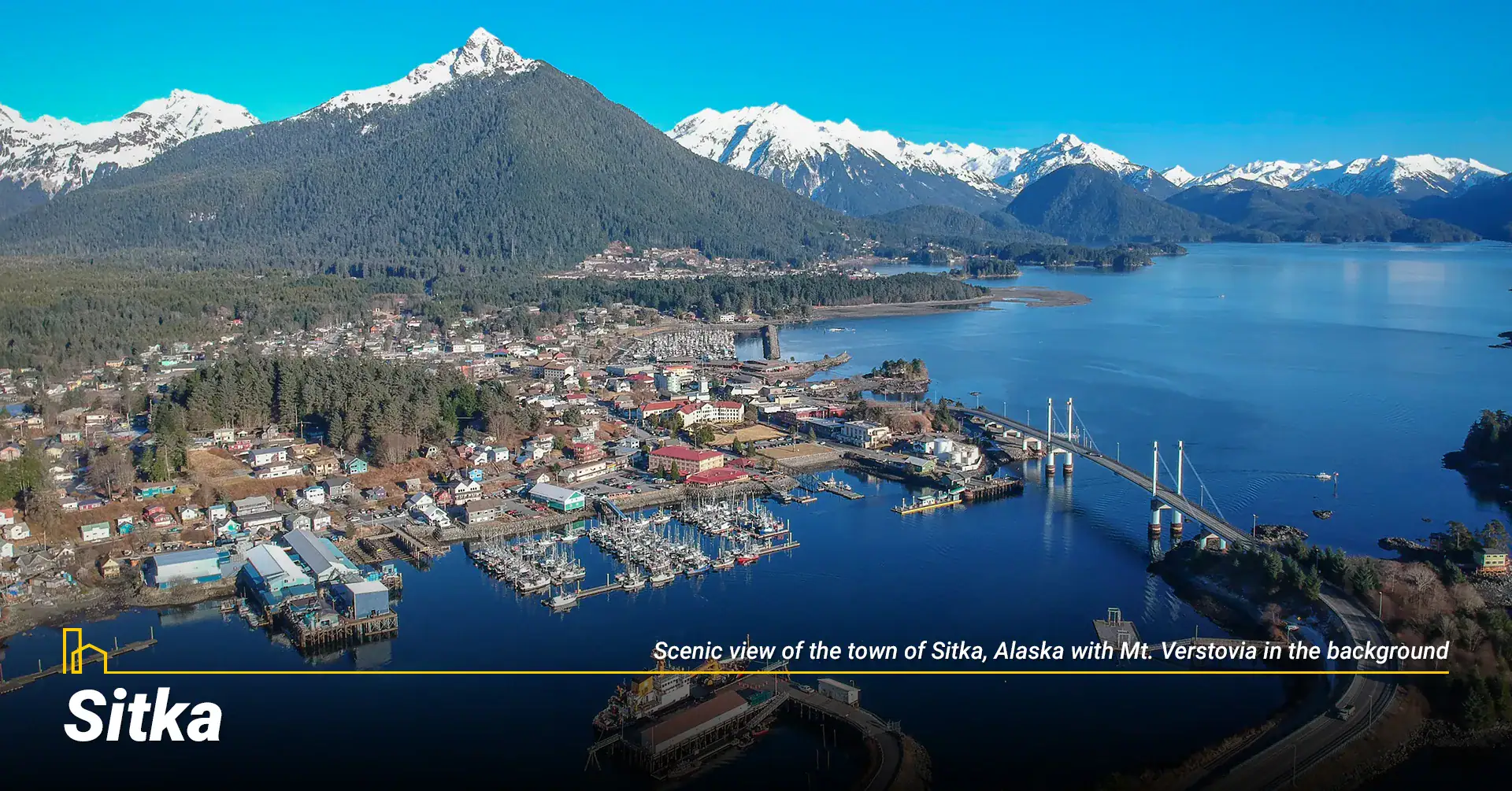
HOMEiA Score: 77/100
- Cost of Living: 32% above U.S. average
- Monthly Rent: $1,350
- Home price to income ratio: 5.3:1
- Income to rent ratio: 59.3x
- Safety rating: 80/100
This Southeast Alaska island community offers an unparalleled natural setting for families valuing outdoor education and community connection. It provides excellent schools, strong community support systems, and incredible access to marine environments. Families can explore rainforest trails, learn about Tlingit culture, and participate in marine science education. The isolated location fosters close community bonds and a safe environment for children, though access to specialized services requires travel.
2. Palmer
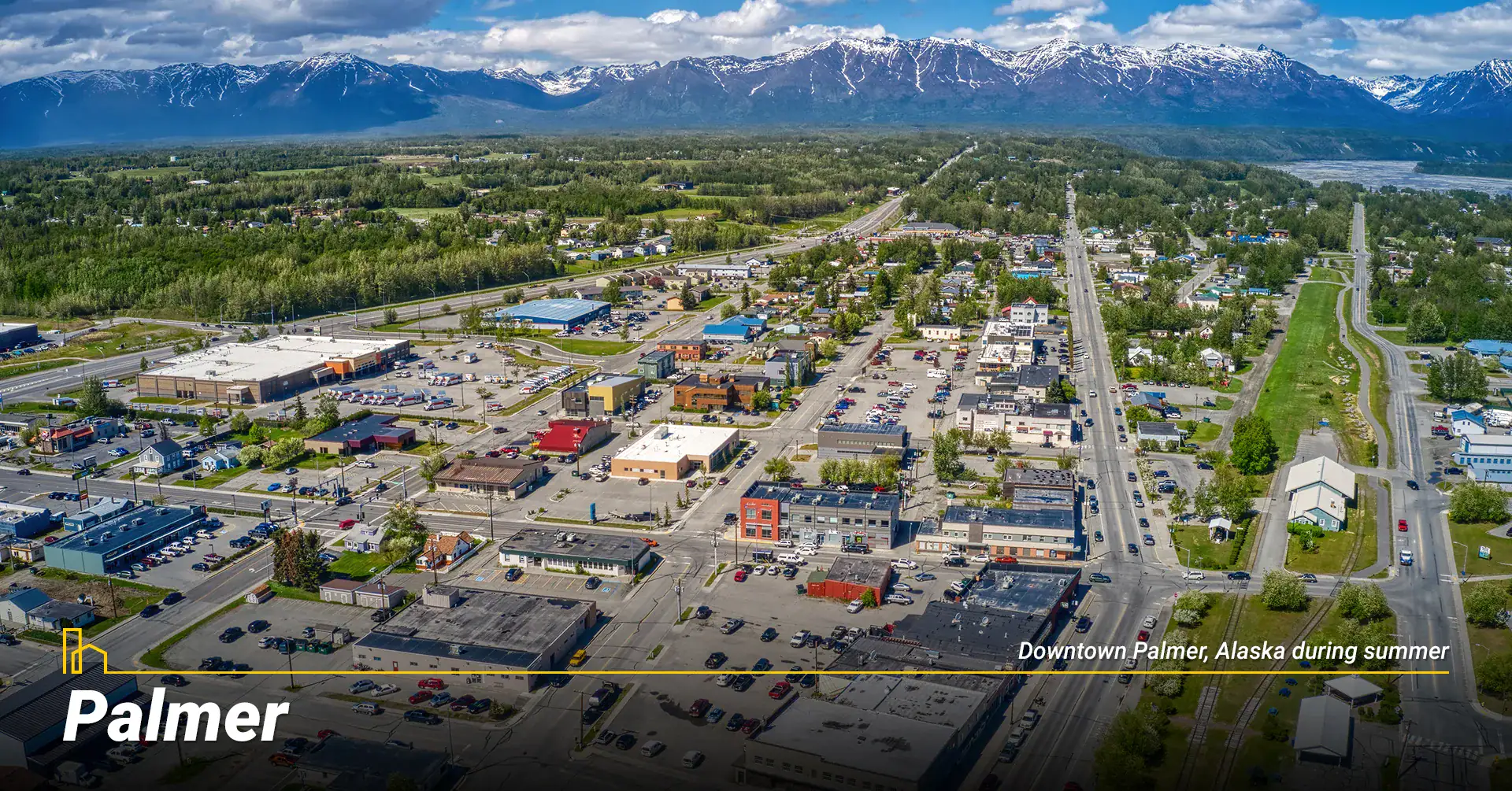
HOMEiA Score: 80/100
- Cost of Living: 26% above U.S. average
- Monthly Rent: $1,400
- Home price to income ratio: 4.8:1
- Income to rent ratio: 57.1x
- Safety rating: 75/100
In the scenic Matanuska Valley, Palmer offers a rural lifestyle with community benefits for families. Boasting established agricultural roots, exceptional schools, and a tight-knit community atmosphere, families easily drawn to here. The famous Alaska State Fair and agricultural heritage provide unique educational experiences for children. While commuting to Anchorage is possible, residents work locally in agriculture, education, or small businesses.
3. Eagle River

HOMEiA Score: 85/100
- Cost of Living: 22% above U.S. average
- Monthly Rent: $1,550
- Home price to income ratio: 5.1:1
- Income to rent ratio: 52.9x
- Safety rating: 78/100
Located above Anchorage, Eagle River is a classic suburban community becoming a top choice for families. It offers quality housing, highly-rated schools within the Anchorage School District, and a significantly higher safety rating than its larger neighbor. With numerous parks, community centers, and family-friendly events, it provides a calm, secure environment while still being a short commute from metropolitan job opportunities. The stunning Chugach Mountains backdrop and access to outdoor recreation make it ideal for active families.
Best Places to Retire in Alaska
1. Petersburg

HOMEiA Score: 79/100
- Cost of Living: 30% above U.S. average
- Monthly Rent: $1,100
- Home price to income ratio: 5.8:1 (Calculated)
- Income to rent ratio: 72.7x (Calculated)
- Safety rating: 82/100
Affordability and community are the main attractions in this Southeast Alaska fishing town. Retirees embrace the strong Norwegian heritage, excellent fishing, and tight-knit community. It’s a quiet, authentic Alaska community for those who prioritize a simple, maritime lifestyle centered around fishing, gardening, and community events. The mild coastal climate and stunning mountain scenery provide a beautiful backdrop for retirement. For other retirement options, explore the best places to retire in the US.
2. Girdwood
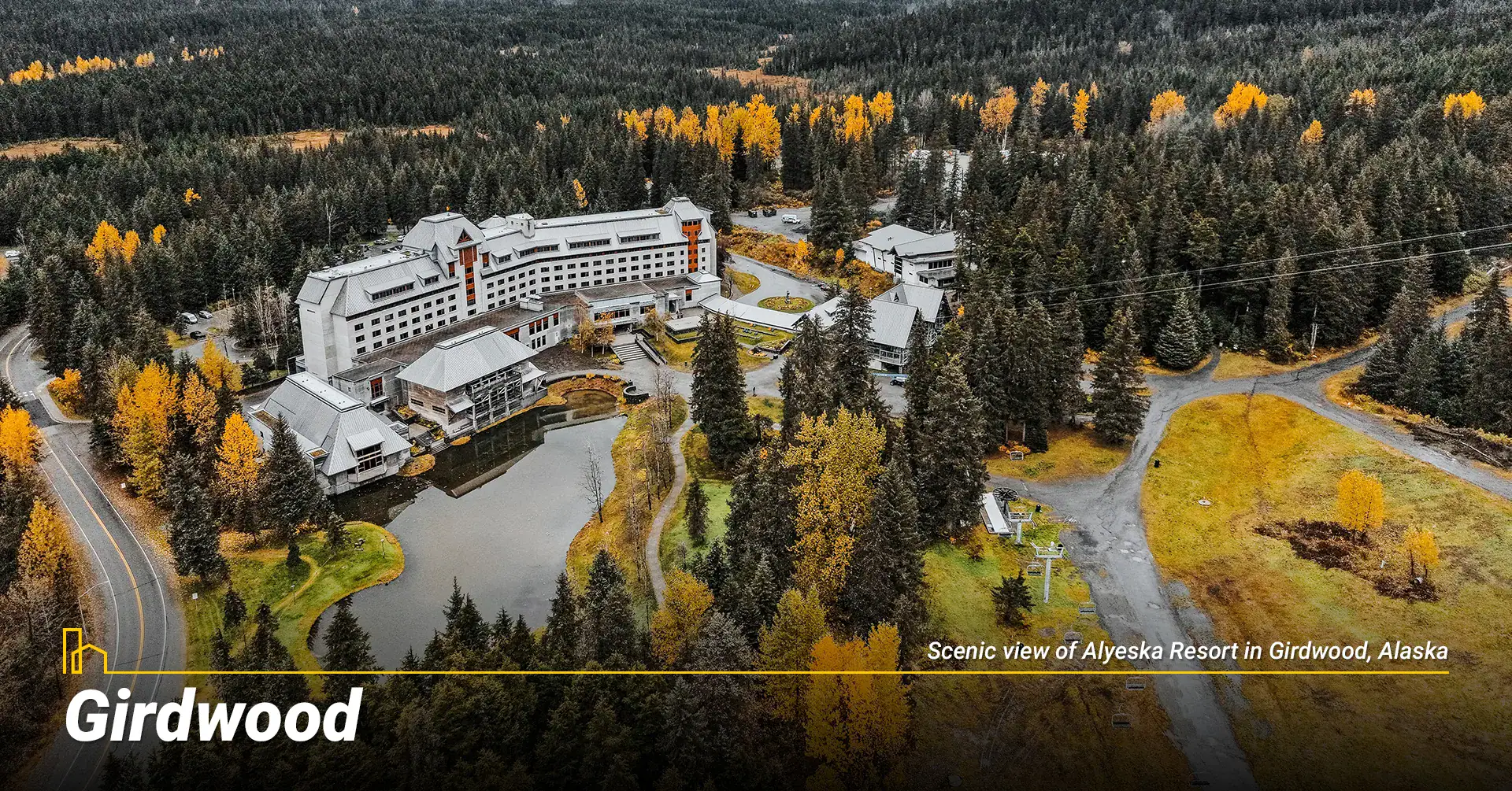
HOMEiA Score: 81/100
- Cost of Living: 35% above U.S. average
- Monthly Rent: $1,800
- Home price to income ratio: 8.2:1 (Calculated)
- Income to rent ratio: 41.7x (Calculated)
- Safety rating: 85/100
This resort community south of Anchorage offers an active retirement lifestyle surrounded by Chugach Mountains. Golden-agers are drawn to the ski resort, hiking trails, and luxury amenities while being close enough to Anchorage for specialized healthcare. The community features upscale dining, cultural events, and a sophisticated atmosphere. While housing is expensive, a combination of outdoor recreation and proximity to urban services makes it ideal for those with sufficient retirement income.
3. Homer
HOMEiA Score: 83/100
- Cost of Living: 28% above U.S. average
- Monthly Rent: $1,200
- Home price to income ratio: 6.5:1 (Calculated)
- Income to rent ratio: 66.7x (Calculated)
- Safety rating: 75/100
The Halibut Fishing Capital of the World, Homer attracts retirees seeking a coastal lifestyle with artistic community and stunning scenery. With a vibrant arts scene and ideal healthcare facilities for its size, it also has a mild coastal climate compared to Interior Alaska. Retirees enjoy world-class fishing, bird watching, and breathtaking views of Kachemak Bay and glaciers. The combination of natural beauty, cultural activities, and friendly community makes it rewarding for those who don’t mind the remote location.
What is It Like to Live in Alaska?
If you’re someone from the lower 48 (or anywhere else for that matter), and you’re planning on making the move up to The Last Frontier, here are the top 19 things to know about what it’s really like living in Alaska…
Alaska Lifestyle: Arts, Food, and Recreation
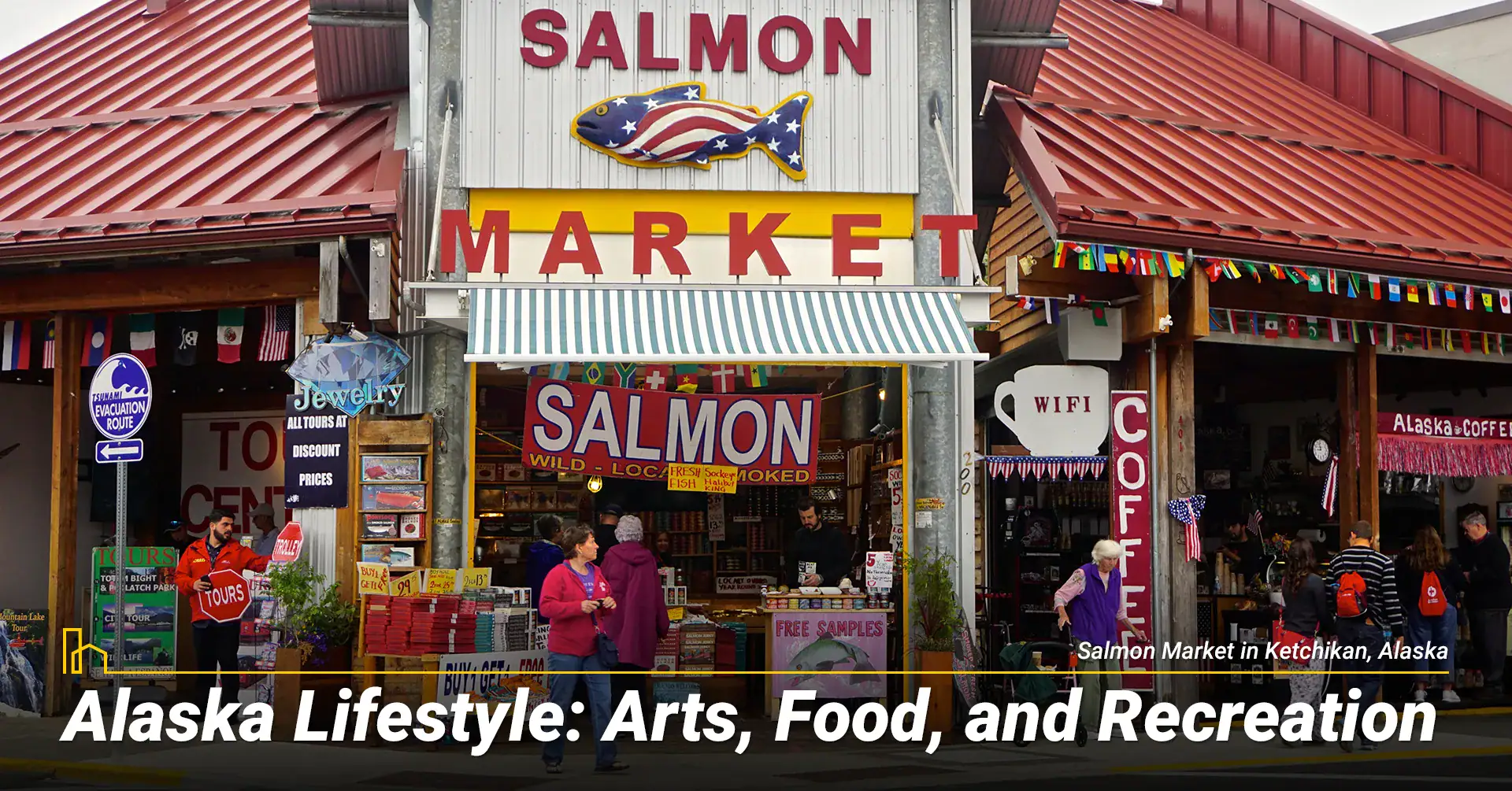
A. Arts and Culture
Alaska’s culture is a unique blend of Native heritage, Russian history, and modern frontier spirit. Communities including Anchorage and Juneau boast impressive museums, notably Alaska Native Heritage Center and the State Museum, alongside thriving galleries and performing arts. Summer includes festivals and cultural events such as the Sitka Summer Music Festival and various Native cultural celebrations, showcasing the state’s diverse artistic traditions.
B. Food Scene
Alaska’s cuisine is famously focused on local seafood and wild game. Seeing fresh salmon, halibut, king crab, and reindeer on menus is common. The fishing industry provides world-class seafood, while hunting traditions supply game meats. While rural areas rely more on shipped goods, farmers’ markets in towns like Palmer and Homer provide fresh local produce during the short growing season.
C. Outdoor Activities
Recreation is central to the Alaska lifestyle under the vast northern sky. Fishing, hiking, hunting, skiing, and wildlife viewing are not hobbies but integral to daily life. A vast network of national parks, wildlife refuges, and public lands ensures endless exploration for all ages and abilities, with activities varying dramatically by season and region.
D. Sports and Community Life
Community life often revolves around outdoor activities and local events. Dog mushing, particularly the Iditarod, captures statewide attention, while college (University of Alaska Anchorage & Fairbanks) provide Division 1 hockey. There is a summer collegiate baseball league featuring 5 teams in the Southeast portion of the state that has seen the likes of Barry Bonds, Mark McGuire, Randy Joihnson, and Tom Seaver on the diamond. Events including the Fur Rendezvous and various summer festivals create strong regional identity and community connection. The challenging environment fosters interdependence and shared experiences that define Alaska living.
Conclusion: Is Alaska Right for Your Lifestyle?
Alaska’s appeal lies in its unparalleled natural beauty, unique financial benefits, and valued communal identity. Whether you’re building a career in Anchorage, raising a family in Eagle River, or enjoying an active retirement in Homer, Alaska presents a compelling case if you can adapt to its extreme climate, high costs, and remote location. Weigh the benefits and trade-offs in terms of career, community, affordability, and personal resilience to decide if this is the right fit for your next chapter. For those still considering their options, our guide on essential steps for moving to a new city is a great resource.
Recommended for you
Frequently Asked Questions About Living in Alaska
1. What is the cost of living in Alaska compared to other states? Alaska’s cost of living is among the highest in the U.S., typically about 30% above the national average. This is driven by high transportation costs for goods, expensive housing in many areas, and costly utilities. However, the lack of state income tax and Permanent Fund Dividend payments help offset some expenses.
2. How severe are the winter conditions? Alaska’s winters are extreme, particularly in northern regions where temperatures can drop to -50°F and darkness lasts for months. Southern coastal areas have milder but still challenging winters. Proper preparation including winter clothing, vehicle preparation, and home insulation is essential for safety and comfort.
3. Is Alaska a good place for families? Yes, for families who value outdoor education, strong communities, and unique cultural experiences. Communities including Eagle River and Palmer offer excellent schools and safe neighborhoods. However, access to certain specialized services and activities can be more limited than in the Lower 48.
4. What are Alaska’s job prospects? Job prospects are excellent within key industries like oil, fishing, tourism, healthcare, and government. The market for other professional fields is more limited outside major population centers. Many jobs are seasonal, particularly in tourism and fishing industries.
5. How is healthcare access across the state? Access to healthcare is good in major cities like Anchorage and Fairbanks, which have large hospitals and specialized services, but limited in rural areas where small clinics have restricted capabilities, often requiring travel for advanced care.
Table of Contents:
- Key Takeaways
- I. Methodology: How We Evaluated Alaska
- Pros: Why Choose Alaska? Top Benefits
- Cons: Alaska Living Challenges — What to Know
- Best Alaska Cities for Young Professionals
- Best Alaska Communities for Families with Young Kids
- Best Places to Retire in Alaska
- Alaska Lifestyle: Arts, Food, and Recreation
- Frequently Asked Questions About Living in Alaska
HOMEiA is a city guide site where visitors can find detailed information about communities of interest. HOMEiA’s City Guides, created in partnership with local writers and editors, are curated lists of the best, safest, and most affordable places to live. The guides feature the HOMEiA Score, a proprietary index that rates communities on such factors as housing costs, education, employment, etc.
HOMEiA.com aims to be the premier site for people planning to relocate, providing them with insightful content and connecting them with skilled real estate professionals.
We also empower real estate professionals to establish or strengthen their web presence by highlighting their experience, knowledge and achievements. If you’re selected to join our list of certified real estate professionals, you will distinguish yourself from your peers — and earn HOMEiA’s support.
If you believe in HOMEiA’s mission, please share our website with others.
Table of Contents:
- Key Takeaways
- I. Methodology: How We Evaluated Alaska
- Pros: Why Choose Alaska? Top Benefits
- Cons: Alaska Living Challenges — What to Know
- Best Alaska Cities for Young Professionals
- Best Alaska Communities for Families with Young Kids
- Best Places to Retire in Alaska
- Alaska Lifestyle: Arts, Food, and Recreation
- Frequently Asked Questions About Living in Alaska








